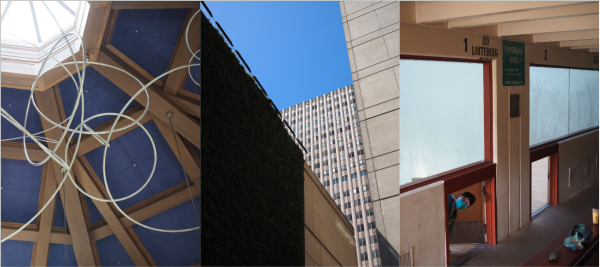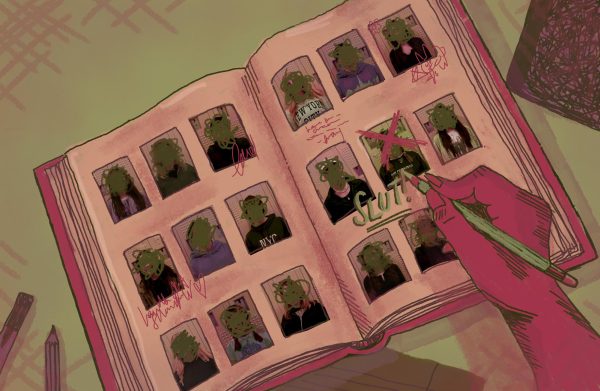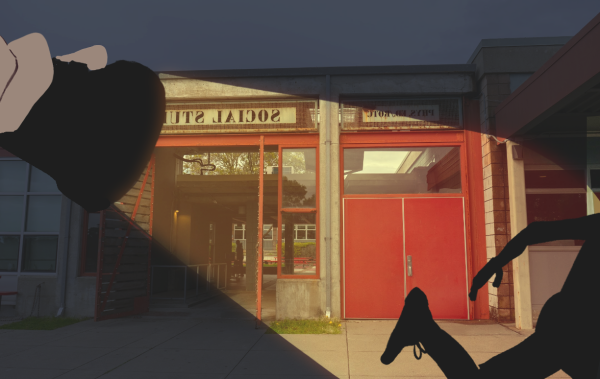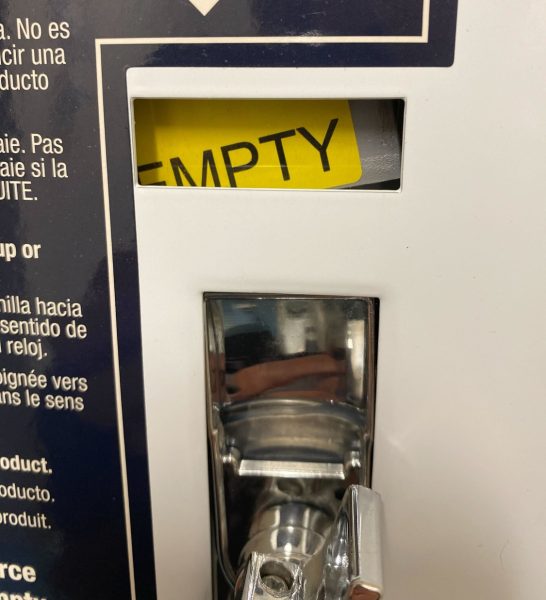Everything you need to know about your school’s $14 million budget
With a little extra money in this year’s budget, the administration and SSC try to figure out how to meet competing demands
By Rachael Schmidt and Maximilian Tiao

The school’s advisory board and administration are debating how to spend a $200,000 surplus that’s a result of larger freshman enrollment this year.
This fall’s final enrollment count is 2,744, about 100 more students than anticipated. The School Site Council has so far settled most of the school’s $14,000,000 budget and plans to determine the rest at its meeting on Nov. 28.
Paying for cultural sensitivity training
Among other expenses, Lowell has to pay for new cultural sensitivity training, one of several changes demanded by the Black Student Union last spring, which the school district was originally supposed to pay for.
The San Francisco-Coalition of Essential Small Schools hosts monthly Equity-Centered Professional Development meetings about equity and building community. The meetings are a response to the demands the BSU made after its walkout in March, according to principal Andrew Ishibashi.
Before this semester, the San Francisco Unified School District was supposed to fund the program for the 2016–2017 school year in an agreement between Ishibashi and then-Chief of Schools Abram Jimenez, according to Ishibashi. At that time, the district paid $37,000 for the two-week summer training for teachers and students, including the cost of stipends for the teachers that attended.
The company billed Lowell for $113,000 in August.
However, Jimenez resigned in July of this year, and the district has decided to not completely fund SF-CESS at Lowell as originally planned, according to Ishibashi. The company billed Lowell for $113,000 in August.
Ishibashi has been trying to negotiate with the district for assistance and received an offer of $40,000 as of Nov. 18, bringing the total bill for this year down to $73,000.
At the Oct. 24 SSC meeting, Ishibashi proposed that part of the extra $200,000 be spent on funding SF-CESS for this year only.
However, the program needs to be four-years long for it to be successful, according to SF-CESS Administrator Gregory Peters. “The work we really do is to help schools look at their systematic issues,” Peters said. “For a school to really engage, we are talking about a four-year period.”
Some of the funds could come from the school’s PD budget. In the spring of 2016, the SSC approved an increase in the budget for Equity Centered Professional Development meetings from $15,000 of last school year to $39,500 for this year. But the SSC did not know that they might be getting the $113,000 bill from SF-CESS.
Spending so much money early into the school year may land the school in some financial trouble later on.
Spending so much money early into the school year may land the school in some financial trouble later on, according to SSC chair and Math department head Tom Chambers. Last spring, the SSC had no surplus funds because they had been spent in the fall. When spring came, the school could not pay for increased student needs based on class size. Chambers does not want a similar situation to happen for this year in Spring 2017, but paying for SF-CESS may bring it about.
Despite the cost of the programs, some SSC members believe what SF-CESS has done for the school is worth it. “You can’t put a price tag on the types of discussions we’ve been having because of the training,” said JROTC advisor and retired Lieutenant Colonel Doug Bullard, who is on the SSC.
“You can’t put a price tag on the types of discussions we’ve been having because of the training.”
Ishibashi said he is disappointed about the financial situation, but agrees that the training is invaluable. “The necessity of having this ethnic sensitivity training is much bigger than Lowell,” Ishibashi said. “We need to do this as a society.”
However, Ishibashi said Lowell may consider switching to a more cost-effective program for the 2017–2018 school year.
Ethnic Studies cancelled because of low enrollment
The BSU had also demanded that the Ethnic Studies class be mandatory for all students to take. However, the class was offered as an elective and only four students enrolled for the class for the fall semester of this year. The administration school cancelled the class and the students were offered other classes to replace that block, according to assistant principal Dacotah Swett. The funds the district gave to Lowell for the class went back to the district, according to Chambers.
Besides setting aside money in the budget for SF-CESS, the SSC has also decided to several other needs.
More Geometry classes
The district is paying for two additional geometry classes for freshmen doubling up on math classes.
The classes are a reaction to changes in the school’s math sequence. In past years, freshmen could take geometry if they had sufficient algebra skills from middle school. Now that the district is requiring all freshmen to take Algebra 1, some freshmen are taking Algebra 1 and Geometry concurrently to be able to qualify for Advanced Placement math classes by senior year.
More textbooks
The SSC also approved $46,000 for textbooks, double the amount from last year. These extra textbooks will go to all departments as needed.
Stipends for consultants
The SSC set-aside stipends totaling $40,000 for four consultants to provide additional support for African-American, Latino, Filipino, Asian and Pacific Islander students at Lowell, in line with a goal to increase minority enrollment in AP classes.
African-American student liaison
The SSC also approved $61,000 to be spent on a salary for an African-American student liaison. The BSU originally requested an African-American student representative at the Board meeting that would represent the BSU at various official school meetings. The creation of the new liaison is in response to the BSU’s demands, according to Ishibashi.
The SSC also approved $61,000 to be spent on a salary for an African-American student liaison.
This liaison will monitor academic achievement through grades for African-American students and help with the College and Career program by making college presentations for the entire school, according to Ishibashi. The liaison, Timothy Gray, will step in for his part-time role this January and will work in building community with secretary Diamond Davis, Peer Resources leader Adee Horn and Ishibashi.
Software licenses
With the remaining $133,000 of the surplus, the SSC voted on a proposal to renew computer program licenses. Every year, programs in the computer labs must be renewed in order to continue working. SSC member Missy Sue Mastel, having received grant requests from teachers in these labs to the Parent Teacher Student Association, proposed to use $11,000 to renew these applications, including Kuta, WizardTM and Symbio.
Bathroom improvements
A third proposal, raised by junior Claire Garcia, requested money be channeled into the school’s bathrooms which, according to Garcia, “leave a lot to be desired.” However, due to the fact that the proposal was not formalized with numbers for costs, the motion could not be approved at the last meeting, according to Chambers.
Last year, Ishibashi began to speak with the district, which generally pays for custodial services, regarding sprucing up the bathrooms at Lowell. However, these plans did not lead to any action from the district or produce any changes, according to Ishibashi.
Graduation gown rentals
The school may have to use part of its budget to cover graduation expenses, including $14,000 in rentals of graduation caps and gowns.
This is in line with California Education Code’s guarantee of a free public education, an issue brought to light this year when the school reimbursed parents who believed they were required to purchase PE uniforms. To address the confusion, the school has issued a form for a reimbursement of the money spent on PE uniforms to students who are currently in a PE class and bought a part of the uniform set. Fifteen students requested reimbursements, according to PE department chair Michael Prutz.
How the school’s budget works
The amount of funds in the budget for any given year is determined by the Weighted Student Formula. It is factored in two ways at Lowell: a ten-day count of present students during registry and the number of students enrolled by grade level, including Special Education students. The more students in a year and present in registry, the more funds Lowell acquires from the district. The funds come from the state, to the district, and then to individual schools.
The more students in a year and present in registry, the more funds Lowell acquires from the district.
Every spring, Lowell estimates its expected amount of students for the upcoming school year so the district can estimate the amount of funds it will give to the school. For 2016–2017, the estimated total of students in the school (not including Special Education) was 2,651. The final number turned out to be 2,744. For this number, Lowell received about $11,600,000 based on the WSF formula for the 2016–2017 school year. This means that for each student, Lowell received about $4,000.
The district also provides the school a significant amount of funds based on the number of AP tests taken. Each AP test brings the school $600, which is used to fund AP prep time for teachers, in accordance with the teachers’ contract. As of the 2016–17 school year, the amount of money from AP tests is estimated to be $2,400,000, which covers roughly 17 percent of the budget.
The school also receives money from sources outside of the district. Local city funds from propositions by voters assist in funding non-academic programs at Lowell. Proposition H, also known as the Public Education Enrichment Fund, gives funds to high schools across the city for sports, libraries, arts and music projects and programs. Lowell received an additional $84,000 this year from the district because of Prop H.
Lowell received an additional $84,000 this year from the district because of Prop H.
Given all the funds that come to the school, it is up to Chambers, Ishibashi and the rest of the SSC to decide how much goes to which sections. The SSC advises the principal, who makes the final decisions, in budget allocations. Every school has an SSC.
The budget is divided into two main sections.
The Labor section funds school staff. For example, the district helps pay for school administrators and teachers by giving enough money for the average cost per staff member. According to the draft budget reviewed on Sept. 26, the average classroom teacher and counselor costs about $95,000, including wages and benefits. This amount may vary with the salary increases negotiated between the teachers’ union and the district.
The number of positions each year depends on student course requests and total number of classes needed, with a full-time teacher teaching five classes. With 110 classroom positions at Lowell this year, the total cost for teachers amounts to $10,366,138 — almost 72 percent of the school’s total funds. That’s 110 full-time equivalent (FTE) positions, which includes part-time staff — the total number of staff is closer to 130.
Any money that is not used by March of 2017 will be given back to the district.
The second section is Supplies, such as textbooks, technology, new boards with markers and other necessary classroom materials. Funding teachers and classes is usually the highest priority, and the supplies budget is usually left with less funds to work with. However, it is often made up for in donations from alumni and the PTSA, some amounts climbing up to $200,000 and above a year.
Any excess funds tend to be placed into different sectors and accounts within Lowell’s budget to be used completely, according to Chambers. Any money that is not used by March of 2017 will be given back to the district.
BY THE NUMBERS
Total Annual Budget (2016–17) for Lowell: $14,402,818
Funding per Lowell student: $4,234
Labor budget: $13,688,062
Supplies budget: $714,756
Number of full-time equivalent teachers: 111
Cost per full-time teacher (including benefits): $94,928
Cost per principal (including benefits): $164,811
Cost per assistant principal (including benefits): $139,843
Cost per counselor (including benefits): $94,928
Technology: $40,000










